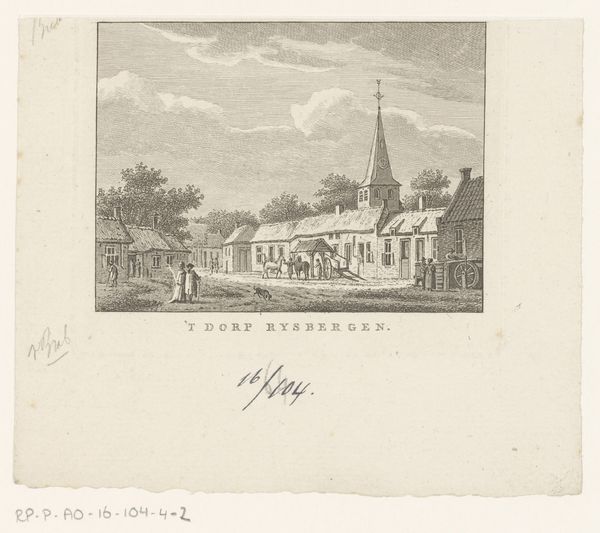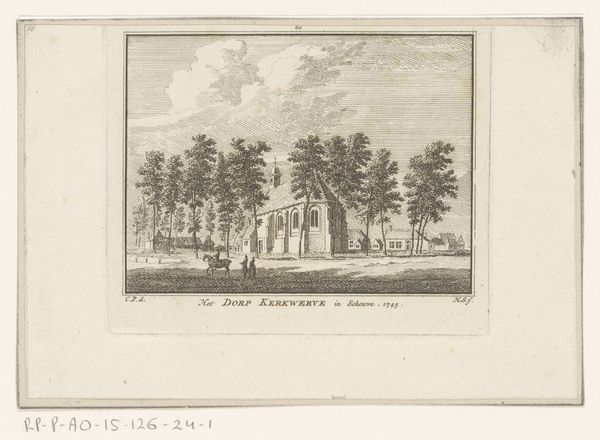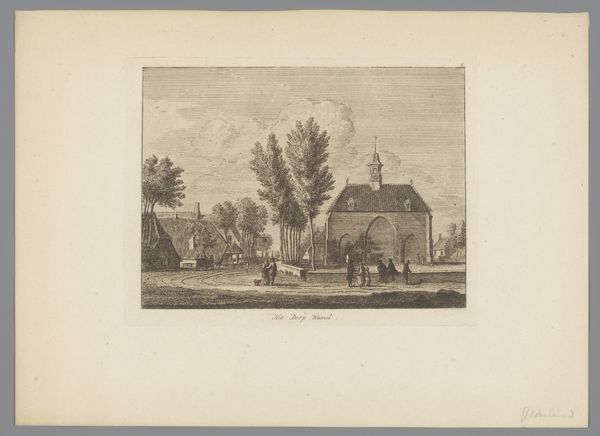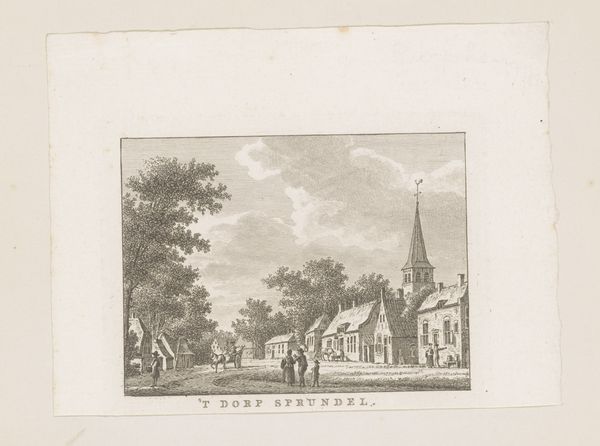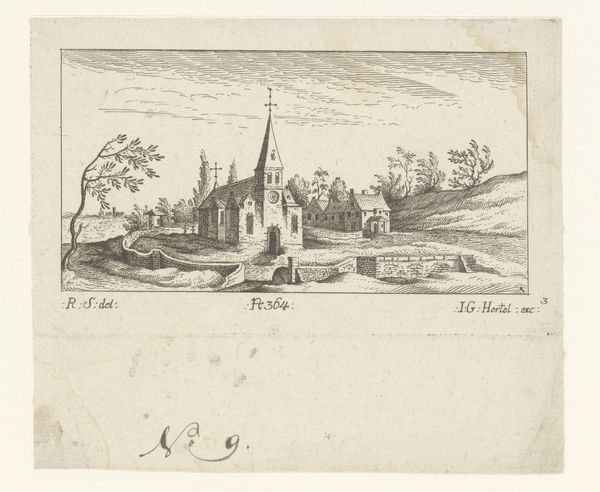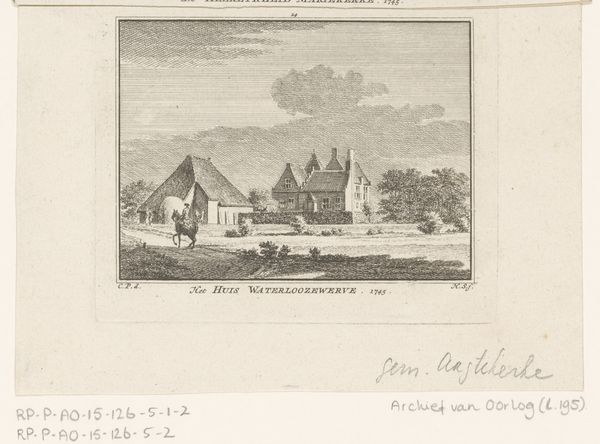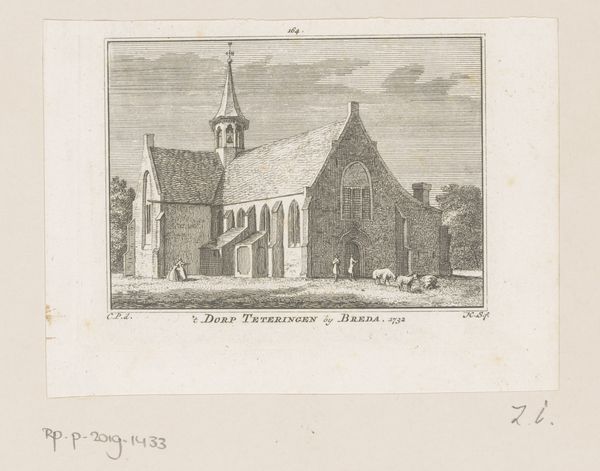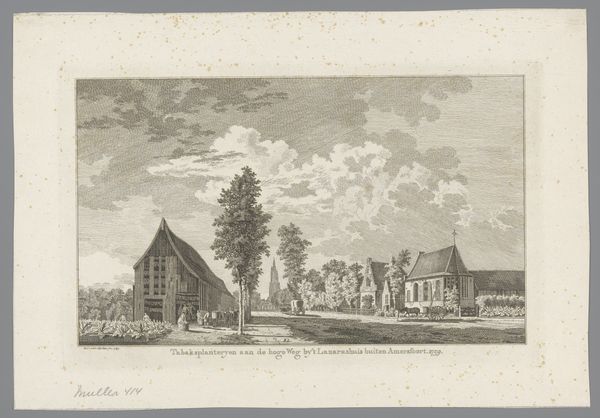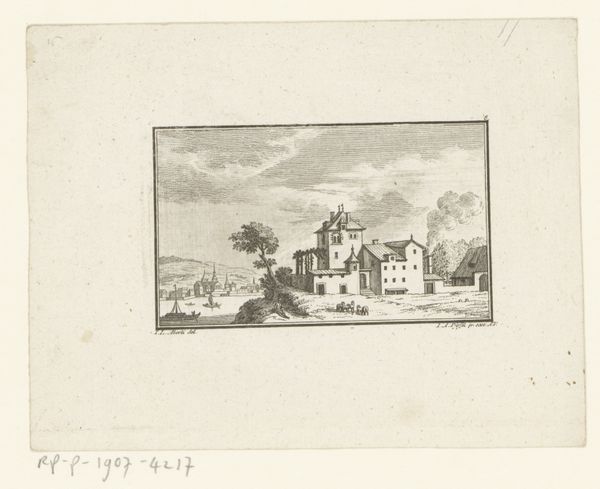
drawing, print, etching, engraving
#
drawing
#
neoclacissism
# print
#
etching
#
landscape
#
engraving
Dimensions: height 86 mm, width 110 mm
Copyright: Rijks Museum: Open Domain
Curator: Before us is “View of the Church at Aalst,” created by Carel Frederik Bendorp sometime between 1786 and 1792. It's a detailed landscape, made using etching and engraving techniques. Editor: It's stark, isn't it? Almost austere. The precision is striking, especially the rendering of the church. Yet there’s a certain lightness, despite the detail. It’s almost dreamlike. Curator: Dreamlike perhaps in its constructed view? Think of the period: Neoclassicism valued order, clarity. The print medium itself reflects this—reproducible, disseminating idealized images to a wider public. The technique of etching and engraving allows for sharp lines and detailed rendering. What does this choice of reproducible print say about its intended audience and accessibility? Editor: Exactly, consider where prints were displayed and consumed during this period. Were they luxury goods for a select clientele or broadly available representations aimed at fostering civic identity? The scenes are idyllic, sure, but who *really* had access to that kind of peaceful life? I'm very much interested in understanding more of how imagery functioned for those who weren't necessarily part of the land-owning elite. How did such representations affect or reflect social status? Curator: Good questions. And what about the act of landscape rendering itself? There’s labor involved, both Bendorp’s meticulous engraving and perhaps the laborers toiling in those fields, hinted at in the scene? Even their roles were codified and commercialized through this form of production and depiction. Editor: True, by acknowledging this landscape, and others of the era, are often idealizations rather than neutral observations we understand more deeply the motivations for portraying them in this way and what purpose it served those in power to circulate images promoting ideas of social harmony. Curator: It pushes us to acknowledge, perhaps even dismantle, romantic narratives attached to such artwork, emphasizing that behind any artistic creation there are networks of influence and intentionality. Editor: I see it less as dismantling and more about bringing forward into the conversation, into view, other contextual pieces that complete our understanding. We gain richer knowledge when we add perspective and complexity. Curator: A more complete, material reality if you will.
Comments
No comments
Be the first to comment and join the conversation on the ultimate creative platform.
